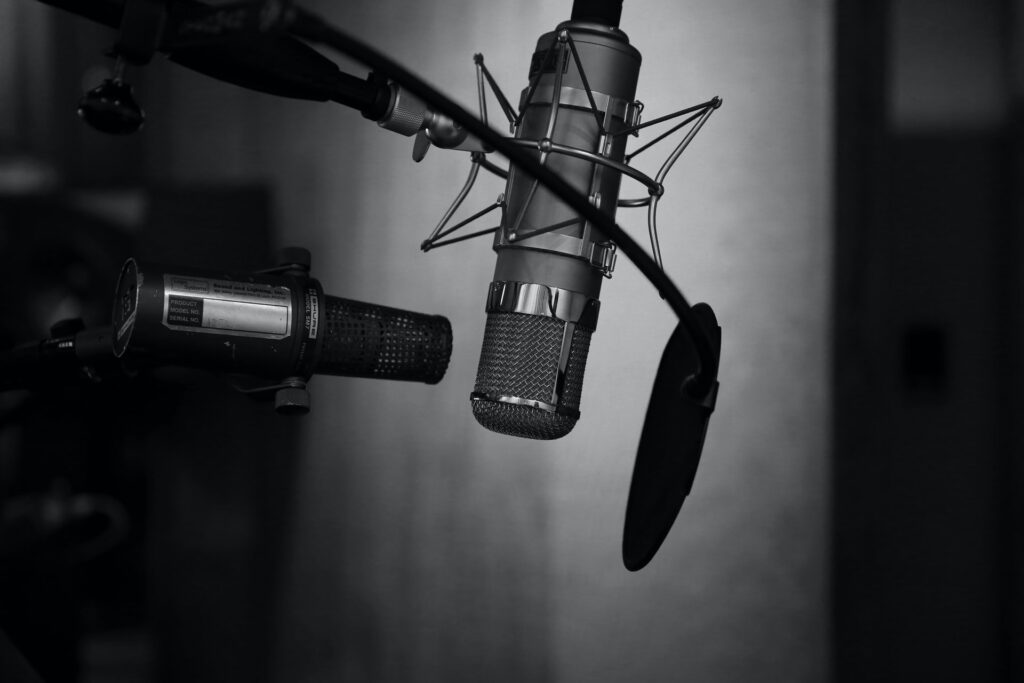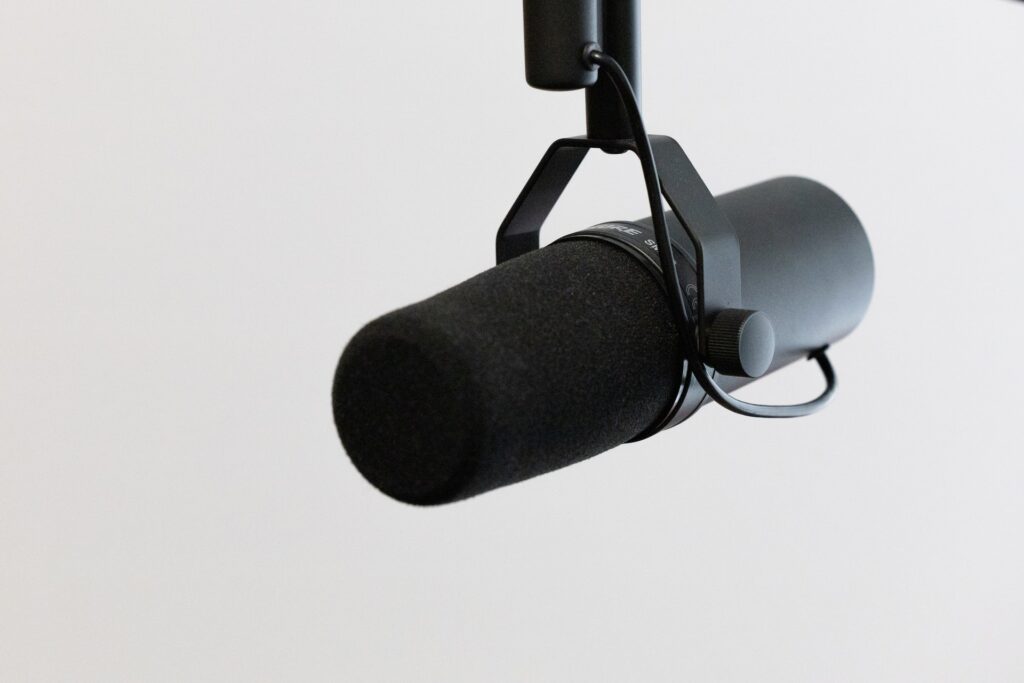When using a microphone, it is essential to understand all the available accessories. Audio equipment is the most versatile and reliant on its accessories among all the tools you can use for your creative projects.
One important distinction to understand from the outset is the fundamental difference between microphone pop filters and foam covers (windscreens).
Both are utilized for distinct purposes. Today, we will examine the differences and similarities between the two, providing a comparison of pop filters and foam covers.
Table of Contents
Why Use A Pop Filter
The wind, breath, and both high- and low-level difficulties are all intertwined in the background. Noise-canceling headphones also remove the popping sounds that arise when certain consonants are sung or spoken.
Filters prevent saliva, dirt, dust, and other debris from entering the microphone, which helps avoid malfunctions.
Studio microphones frequently capture popping and plosive sounds when consonants such as P and B are pronounced. The purpose of pop filters is to shield you from these undesirable “pops.”
They can make everyone’s life easier from start to finish. Pop filters, unlike windscreens, are significantly more effective at reducing background noises in close-mic situations, such as podcasts, vocals, voiceovers, and other similar contexts.
When faced with the choice between a windshield and a pop filter, which one should you select? Ultimately, it depends on the specifics of the situation.
Using a pop filter indoors is preferable to using a windshield when recording outdoors, as a pop filter cannot protect your recordings from low-frequency wind noises.
Why Use A Foam Cover?
When the wind blows, it significantly affects microphones. Using a microphone exposed to the wind can render your voice inaudible when recording a podcast. To address this common issue, microphones are often equipped with a foam windshield.
A foam windscreen that attaches to a microphone, commonly referred to as foam (because, well, it is foam!). The snug fit protects the microphone capsule from windblast.

Taking your bare microphone outside to record a short clip will give you an idea of what windblast sounds like. You may hear a pounding sound in the video.
In the production of foam microphone filters, manufacturers often use open-cell foam. As sound waves reach the microphone capsule, the incoming wind flows into and around the foam structure.
This minimizes noise while preserving sound quality. Foam is essential, particularly when recording outdoors, so be sure not to overlook it.
Pop Filter
In recording studios, pop filters and pop screens are commonly used to enhance the clarity of recorded speech. While these devices are smaller than those that completely cover the microphone, they are typically positioned close to both the microphone and the speaker’s mouth.
When you sing or speak with a pop filter, you won’t hear any popping noises or glottal stops in your voice. Spitting into the microphone can be masked by covering breath bursts.
Pop filters are available in various shapes and sizes, yet they all serve the same fundamental purpose. The narrower mesh texture allows more high-frequency sounds to pass through compared to foam coverings, making them ideal for podcasts, interviews, and vocal recordings.
What Are They Good For
When using voice-over microphones, plosives and sibilance can be minimized with the use of pop filters. Without a pop filter, your recordings may sound unprofessional and lack polish. Creating engaging podcasts, YouTube videos, or voiceovers without them is nearly impossible.
Different Types of Pop Filters

1. Nylon Mesh Pop Filters
When creating nylon pop filters, a plastic or metal hoop is stretched twice to form the outer layer of the filter. Plosives are blocked before they reach the microphone by the two layers of material.
2. Metallic Mesh Pop Filters
Woven metal mesh or perforated metal is used to create these circular filters, which can be employed to filter water. They feature larger holes than filters made from the previously mentioned material and are the most effective at reducing noise levels.
Airflow is directed downward using metallic mesh filters due to their well-designed apertures, which have minimal impact on high frequencies.
Foam Covers
When choosing between a pop filter and a microphone foam windscreen, many factors must be considered.
In summary, microphone foam covers protect microphones from damage caused by strong winds, which could otherwise lead to excessive noise.
In situations where you need to capture ambient noise with minimal distortion, these microphones are essential.
Many microphones sold by various manufacturers come with custom-sized windscreens. Additionally, some windscreens are compatible with a wide range of microphones, such as universal options.
Despite their low cost and portability, they effectively keep the microphone dry. Windshields filter low-frequency interference, similar to pop filters, by absorbing it.
What Are They Good For
When recording or presenting outdoors in windy conditions, windscreens are an essential accessory. This is particularly critical in situations where there is no opportunity for a redo.
Suppose you’re filming near a beach and want to capture the sound of the waves, but you don’t want the wind to distort or drown out the actors’ voices during recording. In this situation, your boom mic will need to have a mic shield installed.
Different Types of Foam Covers

1. Windjammers
Windjammers are constructed from a synthetic material known as fur. In certain circles, they are referred to as “windsocks.” Windjammers are used to fully conceal microphones. They are most frequently found on boom microphones, which are the types of microphones typically seen during the filming of a movie or television show.
Polyurethane foam is applied to the exterior of windjammers to further minimize the interference caused by the wind.
Their windscreens are integrated into the blimp-shaped microphones to which they are attached, rather than being separate components.
2. Blimps
Blimps, which are large foam windscreens that offer the best wind protection, are commonly used. Shaped like a blimp, they hold the microphone securely in a cylindrical space.
Blimps offer comprehensive protection from all directions by fully enclosing the microphone within a large open chamber design. This can be enhanced with synthetic fur covers, which help reduce most unwanted noise. They are ideal for recording in outdoor environments.
The Advantages and Disadvantages of Using These Filters
Pop Filter
As mentioned earlier, pop filters reduce plosives and sibilance, which is essential for achieving professional-grade audio recordings of your content. Utilizing a pop filter ensures that you won’t encounter any issues with high and low tones.
If you are doing a lot of voice recording, a pop filter will streamline the editing process, as you won’t have to manually edit out all the minor imperfections caused by popping.
When you consider how easy it is to implement a pop filter, it becomes clear why having one as a microphone accessory is always a wise choice.
Although a pop filter offers many advantages, it is not a flawless microphone accessory. Unfortunately, pop filters are not as effective at eliminating background and wind noise as a foam cover is.
If you are using a metal pop filter, you may notice an odd whistling sound in your recording, which can be amplified by wind noise or other unwanted background sounds.
One of the most apparent issues with a pop filter is that the nylon mesh will always obstruct the way.
Foam Cover
A foam cover is an excellent piece of equipment, whether you use it on a condenser mic or any other type of microphone. The specific foam material is not important, as long as it effectively reduces background noise, such as wind noise; it is fulfilling its purpose.
Whether you are in an indoor setting, such as a recording studio, or outdoors, if you want to capture essential sounds while minimizing unwanted noise, a mic windscreen, like a foam cover, will do the job.
Similar to a pop filter, it is very easy to use, so you should always keep one on hand if you want excellent audio quality.
The only issue with this type of filter is that the foam cover tends to dry out over time. This can lead to flaking, which may impact the audio quality of the recorded material.

The other issue is a minor one: while this filter provides good wind protection, it cannot block other sounds, such as plosives.
The foam cover can sometimes pick up high-frequency sounds, which may result in a dull sound in your recording.
Is Using a Filter Necessary?
The situation largely determines the response. Mic windscreens, however, should only be used outdoors, not indoors. They can be made from foam or synthetic hair, commonly referred to as “dead cat.”
Windscreens for microphones can diminish frequency response, so they should only be used when absolutely necessary and not as a replacement for a high-quality pop filter when recording in an enclosed environment.
Conclusion: Pop Filter vs. Foam Covers
As you can see, the answer to the question of pop filter versus foam cover is not straightforward. Microphone windscreens enable you to record outdoors, which is beneficial when attempting to capture a broad range of sound.
A pop filter, in contrast, enables you to record sound indoors. Microphone windscreens cannot completely eliminate all plosive and popping sounds that are inevitable when recording human speech.
You should select the option that best meets your needs.
